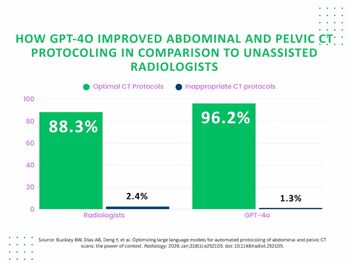
Ultromics Gets HCPCS Code for AI-Powered EchoGo Heart Failure Device
An artificial intelligence (AI)-enabled platform that can reportedly diagnose heart failure with preserved ejection fraction (HFpEF) through analysis of a single echocardiogram view, the EchoGo Heart Failure now has a HCPCS code for use of the technology in outpatient settings for Medicare beneficiaries.
A newly issued HCPCS code from the Centers for Medicare and Medicaid Services (CMS) may facilitate wider adoption and reimbursement for use of the artificial intelligence (AI)-enabled EchoGo® Heart Failure device (Ultromics) to aid in detecting heart failure with preserved ejection fraction (HFpEF).
Clinicians may utilize the HCPCS code (C9786),
“This is a major milestone and will enable hospitals to accelerate the adoption of EchoGo Heart Failure to improve detection of HFpEF within their systems,” noted Ross Upton, Ph.D., the CEO and founder of Ultromics. “Given the prevalence of HFpEF, this is a significant development toward recognizing and detecting a heavily underdiagnosed condition.”
EchoGo Heart Failure, which received
References
1. Ultromics. CMS establishes HCPCS code for Ultromics EchoGo Heart Failure, accelerating access to precision HFpEF detection. Available at: https://www.prnewswire.com/news-releases/cms-establishes-hcpcs-code-for-ultromics-echogo-heart-failure-accelerating-access-to-precision-hfpef-detection-301869759.html . Published July 5, 2023. Accessed July 6, 2023.
2. Hall J. FDA clears AI-powered echocardiography platform for detecting heart failure with preserved ejection fraction. Diagnostic Imaging. Available at: https://www.diagnosticimaging.com/view/fda-clears-ai-powered-echocardiography-platform-for-detecting-heart-failure-with-preserved-ejection-fraction . Published December 7, 2022. Accessed July 6, 2023.
3. Nikorowitsch J, Bei der Kellen J, Kirchhof P, et al. Applying the ESC 2016, H2 FPEF, and HFA-PEFF diagnostic algorithms for heart failure with preserved ejection fraction to the general population. ESC Heart Fail. 2021;8(5):3603-3612.
4. Sanders-van Wijk S, Aizpurua AB, Brunner-La Rocca HP, et al. The HFA-PEFF and H2FPEF scores largely disagree in classifying patients with suspected heart failure with preserved ejection fraction. Eur J Heart Fail. 2021;23(5):838-840.
Newsletter
Stay at the forefront of radiology with the Diagnostic Imaging newsletter, delivering the latest news, clinical insights, and imaging advancements for today’s radiologists.




























